|
|
|||
THIS WEEK at HILTON POND
8-14 June 2006
Installment #319---Visitor #
(Back to Preceding Week; on to Next Week)
|
MORRIST0WN NY:
A NATURE TRAVELOGUE Despite our strong ties to Hilton Pond Center, we frequently wander from the Carolina Piedmont for speaking engagements, nature investigations, and visits with friends and family. This week, in fact--thanks to an airline voucher wife Susan earned when she volunteered a seat on an overbooked flight--
All text & photos © Hilton Pond Center In the decades since we've known Jim Shuman we've been many places together, from Spruce Knob in West Virginia to Morton Arboretum in Chicago to Carolina Sandhills National Wildlife Refuge at McBee SC, and invariably we have reminisced about past outdoor adventures while engaging in delightful new ones. We were even on hand in Gouveneur NY when Jim married Laurie Holena back on 14 June 1996. Thus, it seemed appropriate we would travel north this week to celebrate the Shumans' 10th wedding anniversary in their newly refurbished river cottage beside the St. Lawrence Seaway at Morristown Harbor on the New York-Canadian border. Morristown--a mile across the water from Brockville, Ontario (at sunset, above)--is a pleasant little town in a rural setting just right for folks who enjoy birds, wildflowers, and going for slow-paced motorboat rides on international waters. In other words, the locale is next to heaven for us and the Shumans.
Out at mid-river from the Shuman's Morristown cottage are the Three Sisters, a trio of small outcroppings that are the last big rocks in the Thousand Islands chain that begins where the St. Lawrence River flows out of Lake Ontario back to the southwest. Actually there are MORE than 1,000 islands--an island being defined as a exposed promontory "surrounded by water year-round and supporting at least one tree." Many of these islands are quite small, but they and the shoals around them represent significant danger to recreational boaters and big ocean-bound freighters (above) that ply the waters of the seaway--hence the need for depth finders, all-weather radar, and a vast array of picturesque little lighthouses like the one on Crossover Island (below). If a captain runs aground in fog with cargo hold full of grain or ore, it's little consolation the shipping channel just off his port bow could be up to 150 feet deep. You can easily spot the biggest of the Three Sisters from the Shuman's back deck, and if the wind's right you can even "hear" it--primarily because the island is home to thousands of Ring-billed Gulls and an ever-growing colony of tree-nesting Double-crested Cormorants (below).
These gulls are active all day, calling loudly and incessantly, but except for a relative few sitting on eggs (below) the ring-bills apparently spend most nights on the water where they somehow must feel safer from predators--even though there don't seem to be any on the island. Maybe gulls leave their daytime home after dusk because they can't stand the noise!
The exposed rocks of the rookery are painted with whitewash, a sure sign birds on the island are well-fed. Unfortunately, the largest of the Three Sisters may lose its designation as a "true island" because every one of its trees that bears a cormorant nest is now a skeleton (below), destined to tip over and fall as its wood decays. Nesting cormorants may strip the trees of leaves and bark, but we suspect nitrates from bird guano are also burning up the trees' roots. How low-growing shrubs are able to survive the cormorant invasion we're not sure. Sport fishermen hate the competition cormorants provide because waters of the St. Lawrence River are rich in catchable, edible fish species--Small-mouth Bass, Muskellunge, Walleye, Yellow Perch, and Northern Pike to name a few. We were surprised to learn a recently established Common Carp-catching contest draws anglers from all over the world as they pursue these elusive bottom feeders that weigh up to 40 pounds.
Each of the islands in the Thousand Islands chain is a microhabitat of its own. The larger islands--some many acres in size--may host humans year-round; Dark Island near Morristown even has Singer Castle (above), built in 1905 by Frederick Bourne, then-president of Singer Sewing Machine Company. Most medium-sized islands are dotted with one or more summer cottages, but the smaller islands--some of which are state, provincial, or national parks--are free of humans except for occasional picnickers who travel by motorboat for an idyllic day in the North Country sun.
Depending on its size, each island has its own more or less diverse complement of plants, from mosses and lichens and crevice-dwelling polypody rock ferns (above) to blueberries and blackberries and White Pine mini-forests that litter the island with needles and cones (below).
Each day we were in Morristown, Capt. Shuman piloted a 18-foot runabout from his boathouse onto the waters of the St. Lawrence, and each day we took a leisurely natural history cruise among the islands. Armed with binoculars and camera, we got views of flora and fauna we might never have seen from shore. One afternoon, for example, as we were heading back toward the Shuman cottage, we skirted past an artificial island--actually a "conical buoy" adorned with navigation markers (below).
As the boat approached the "island"--a mere 30 feet in diameter--a cloud of perhaps a hundred birds exploded from vegetation growing thereupon. We had just spooked a colony of somewhat uncommon Common Terns nesting on what almost certainly was as predator-proof an outcropping as they could ever hope to find!
After this exciting tern discovery we continued downriver until Jim Shuman spotted something light-colored floating on the surface. He steered back toward the object, which we were surprised to find was a dead Canada Goose (above). Upon closer inspection we saw it had holes in its breast--undoubtedly excavated by hungry gulls in pursuit of the bird's nutritious breast meat--and that, wonder of wonders, there was an aluminum band on its left leg. After fishing the goose out of the water we carefully read the inscribed numerals, 978-05994, with the intent of reporting the band number to proper authorities upon our return to shore.
We cruised around a bit longer and then Jim headed his craft toward home. The wind picked up as we approached, and standing straight out from the boathouse flag pole were two pennants: The stars and stripes of the American flag and, in our honor, the Palmetto and crescent of South Carolina's official banner--a nice touch from our friend of 40-plus years. Back in 1996 we traveled to upstate New York to shoot video at the marriage of Jim and Laurie Shuman. This year--as evening fell on 14 June--we drove over into Canada for the Shumans' tenth anniversary dinner (below right), passing through customs with nothing to declare but a lifetime of memories. Appropriately, upon our return to Chateau Shuman we were serenaded loudly all night by a chorus of Common Loons paddling and diving outside the boathouse.
Next morning, when we packed up for the drive to the Syracuse airport and our return trip to Hilton Pond Center, a young (second-year?) loon cruised in close under the watchful eye of an older (third-year?) bird in full breeding plumage (above left). Two Common Loons in one field of view: What a great way to end our trip to upstate New York, the Canadian border, and the Shuman cottage on the St. Lawrence River at Morristown Harbor. We're already making plans to return to the North Country for the Shumans' 25th anniversary in 2021, and we expect Jim and Laurie, the South Carolina flag, and some loons to be waiting for us.
All text & photos © Hilton Pond Center POSTSCRIPT: Barely a week after reporting the leg band number of the dead Canada Goose (see above) to the federal Bird Banding Lab in Laurel MD on 14 June 2006, we received a "Certificate of Appreciation" (below) with information the bird had been banded as a non-flying youngster in Seeley's Bay, Ontario by Norm North of the Canadian Wildlife Service--almost exactly one year earlier on 21 June 2005. (Seeley's Bay is about 30 miles west of Morristown NY where we found the goose.)
Comments or questions about this week's installment?
Thanks to the following fine folks for recent gifts in support of Hilton Pond Center for Piedmont Natural History and/or Operation RubyThroat: The Hummingbird Project. Your contributions allow us to continue writing, photographing, and sharing "This Week at Hilton Pond." (See Support if you'd like to make a gift of your own.)
"This Week at Hilton Pond" is written & photographed You may wish to consult our Index of all nature topics covered since February 2000. You can also use our on-line Hilton Pond Search Engine at the bottom of this page. For a free, non-fattening, on-line subscription to |

 we finally had the means to travel north to see old friend and colleague Jim Shuman, education chair of St. Lawrence University in Canton NY. We first met Jim in 1964 at the National Youth Science Camp, held each summer in Pocahontas County WV to honor two promising young science students from each state. Jim had been a delegate from Iowa to the first NYSC in 1963 and was on staff the following year when we were lucky enough to represent South Carolina. Jim is the person who--with assistance from his father Ruhl--lured us into the world of birding one October weekend in 1976 by inviting the Hiltons to Pennsylvania's Hawk Mountain Sanctuary, where we all became entralled with the wonders of raptor migration.
we finally had the means to travel north to see old friend and colleague Jim Shuman, education chair of St. Lawrence University in Canton NY. We first met Jim in 1964 at the National Youth Science Camp, held each summer in Pocahontas County WV to honor two promising young science students from each state. Jim had been a delegate from Iowa to the first NYSC in 1963 and was on staff the following year when we were lucky enough to represent South Carolina. Jim is the person who--with assistance from his father Ruhl--lured us into the world of birding one October weekend in 1976 by inviting the Hiltons to Pennsylvania's Hawk Mountain Sanctuary, where we all became entralled with the wonders of raptor migration.


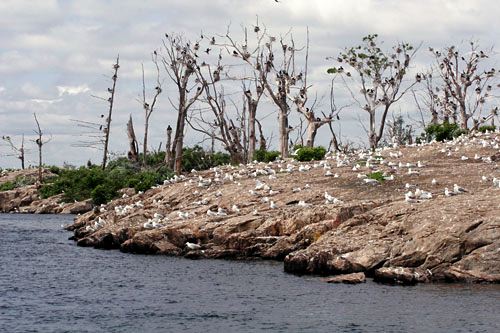

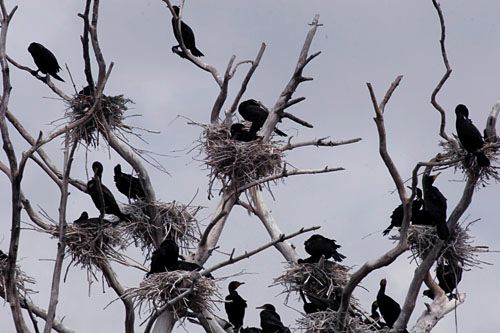
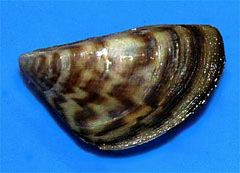 Too bad carp don't nibble more on the invasive, pipe-clogging Zebra Mussels (right) introduced into the seaway and Great Lakes--apparently in ship ballast from northern Europe. These inch-long bivalves attach themselves to everything--even larger native clam species they outcompete. Ironically, the prolific non-native Zebra Mussel is so efficient at filtering particulate matter that waters in the Great Lakes and the St. Lawrence River have become much clearer in recent years. This allowed a historically small cormorant population to explode because it's now easier for these birds to see fish they catch by diving as deep as 120 feet in nearly silt-less waterways.
Too bad carp don't nibble more on the invasive, pipe-clogging Zebra Mussels (right) introduced into the seaway and Great Lakes--apparently in ship ballast from northern Europe. These inch-long bivalves attach themselves to everything--even larger native clam species they outcompete. Ironically, the prolific non-native Zebra Mussel is so efficient at filtering particulate matter that waters in the Great Lakes and the St. Lawrence River have become much clearer in recent years. This allowed a historically small cormorant population to explode because it's now easier for these birds to see fish they catch by diving as deep as 120 feet in nearly silt-less waterways.

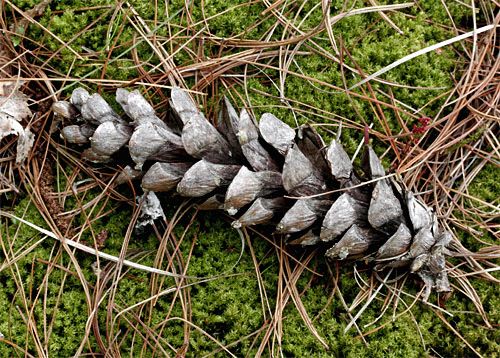


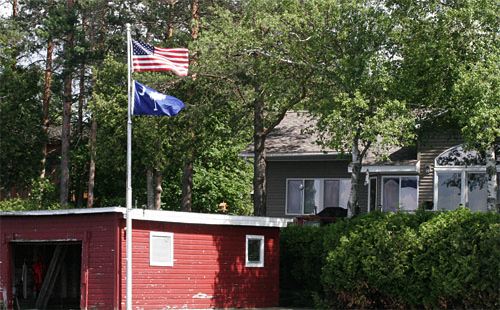
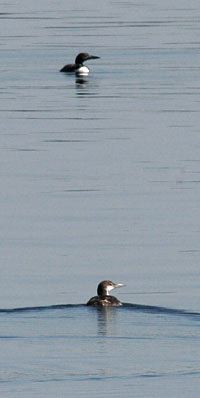 . . .
. . . 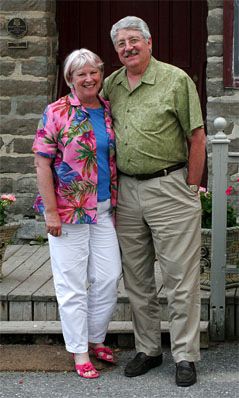
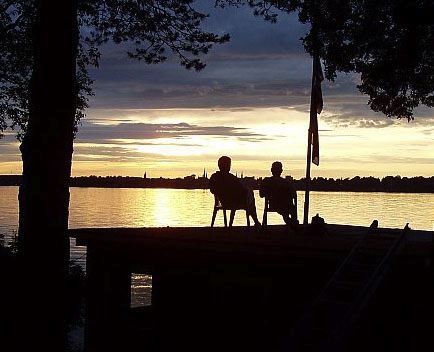



 Please report your
Please report your
